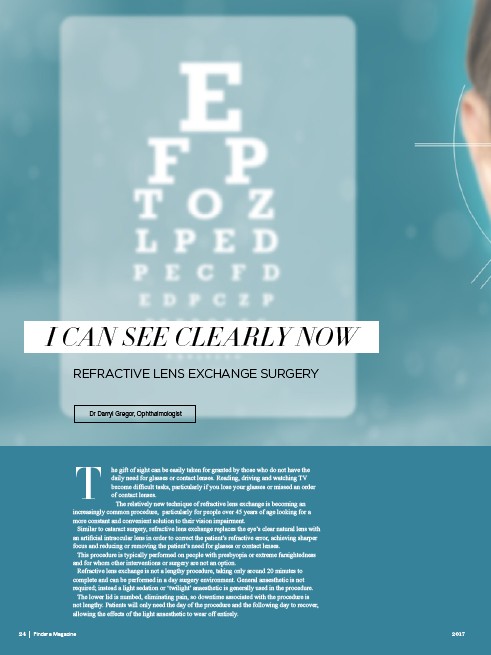
I CAN SEE CLEARLY NOW
REFRACTIVE LENS EXCHANGE SURGERY
Dr Darryl Gregor, Ophthalmologist
he gift of sight can be easily taken for granted by those who do not have the
daily need for glasses or contact lenses. Reading, driving and watching TV
become difficult tasks, particularly if you lose your glasses or missed an order
of contact lenses.
The relatively new technique of refractive lens exchange is becoming an
T
increasingly common procedure, particularly for people over 45 years of age looking for a
more constant and convenient solution to their vision impairment.
Similar to cataract surgery, refractive lens exchange replaces the eye’s clear natural lens with
an artificial intraocular lens in order to correct the patient’s refractive error, achieving sharper
focus and reducing or removing the patient’s need for glasses or contact lenses.
This procedure is typically performed on people with presbyopia or extreme farsightedness
and for whom other interventions or surgery are not an option.
Refractive lens exchange is not a lengthy procedure, taking only around 20 minutes to
complete and can be performed in a day surgery environment. General anaesthetic is not
required; instead a light sedation or ‘twilight’ anaesthetic is generally used in the procedure.
The lower lid is numbed, eliminating pain, so downtime associated with the procedure is
not lengthy. Patients will only need the day of the procedure and the following day to recover,
allowing the effects of the light anaesthetic to wear off entirely.
24 Pindara Magazine 2017